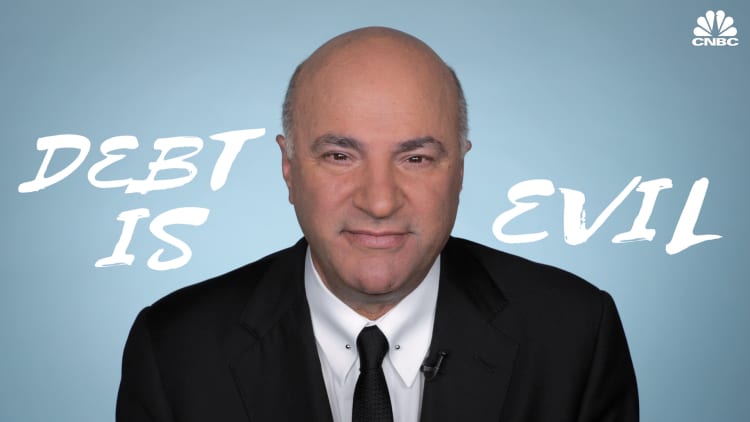Over 44 million Americans have student loans, with the average debt hovering around $33,000. And yet that's not the No. 1 source of debt for the average older millennial.
Millennials between the ages of 25 and 34 have an average of $42,000 in debt each, according to Northwestern Mutual's 2018 Planning & Progress Study. The biggest source? Credit card debt.
Credit card balances make up a full fourth of the average older millennials owe, while student debt accounted for about 16 percent, according to Northwestern Mutual. The findings are based on a survey of over 2,000 U.S. adults, including an oversampling of more than 600 millennials.
"As you grow older, your expenses increase. The additional pressures that come onto the pocketbook only grow and your disposable income shrinks in a lot of cases, even if your salary is growing," Emily Holbrook, director of planning for Northwestern Mutual, tells CNBC Make It.
The pressure to start relying on credit cards makes a lot of sense, she says. Millennials also cope with many other financial burdens that other generations haven't had, including those high student loans, as well as self-funded retirement savings and soaring home prices, to name a few.
Across the board in America, debt is on the rise — even though most people have a strong desire to pay it off. According to Northwestern Mutual's findings, the average American has about $38,000 in debt, up $1,000 from a year ago.

"Despite recognizing that debt is dangerous waters, Americans are jumping in with both feet and struggling to stay afloat," Holbrook says.
In fact, Americans are twice as likely to rack up debt as to accumulate personal savings. Northwestern also found that Americans put almost the same amount of money towards discretionary spending — such as dining out and pursuing their hobbies — as they do to paying down their debt.
"People's purse strings are clearly caught in a tug of war between enjoying the present and saving for the future," Holbrook says.
Americans are twice as likely to rack up debt as to accumulate personal savings.
If you are looking to pay down your debt, Holbrook recommends spending at least 10 minutes sorting through what kind of debt you have and what the interest rates are, and prioritizing what to pay down first. That will give you a path forward.
"Going through that exercise and being able to have a level of scrutiny around your debt can make you feel like you can take a bite out it one at a time," Holbrook says. She recommends paying down high-interest debt like credit card debt first before tackling the lower interest, perhaps tax advantaged debt like mortgages or student loans.
And make sure you're not just paying down debt. You should also be saving for the future, the easiest way being to automate your savings, Holbrook says. In some cases, particularly when you factor in the power of compound interest, your savings could be growing at a faster rate that the low-interest rate debt.
Don't miss: Members of Gen Z already owe an average of $4,343 each and they can't even legally drink yet
Like this story? Subscribe to CNBC Make It on YouTube!




